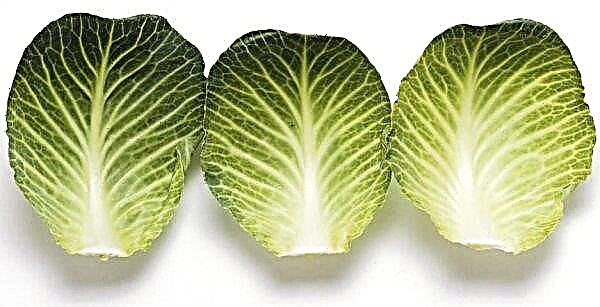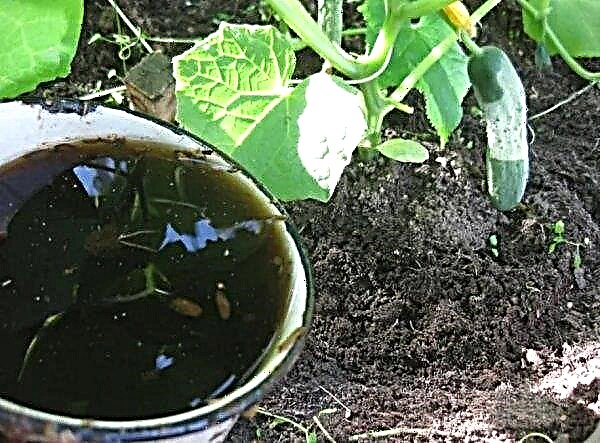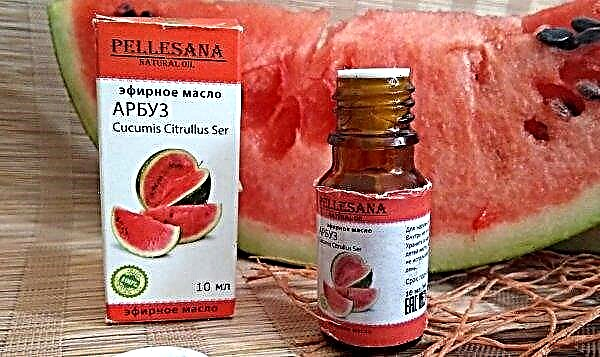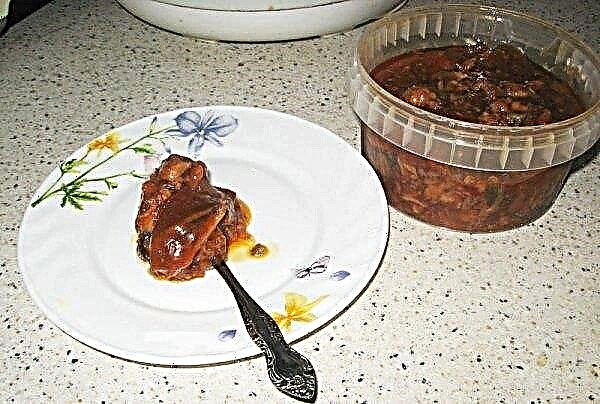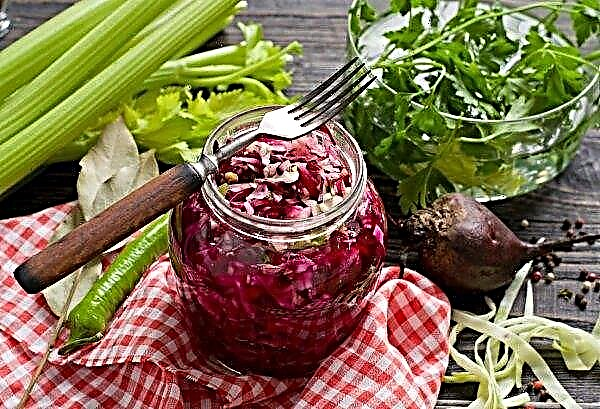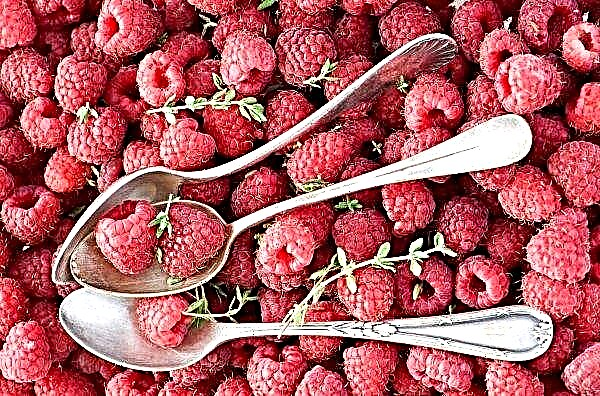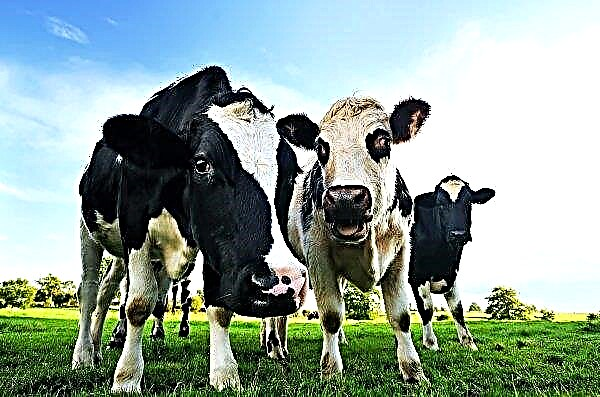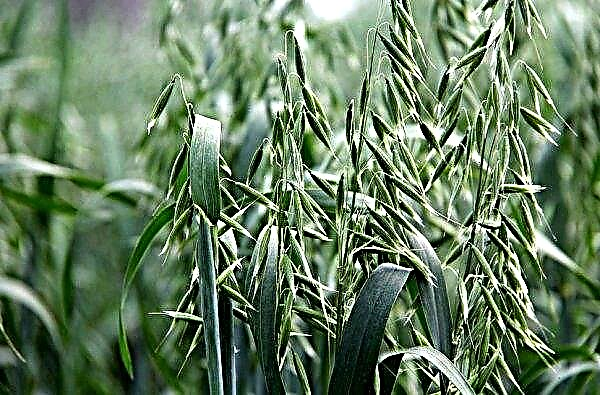Purple onions are extremely healthy. It contains special substances that give root crops an unusual red-violet color. What is useful for this type of onion, read below.
Description and composition of purple onions
Lilac or Yalta onion has unique properties. It differs from standard onions with a sweet taste. Most varieties of blue onions offered in the markets are not the real Yalta variety, but belong to the steppe crops, which have standard taste, with a characteristic burning sensation.
The Crimean variety of onions was bred by crossing Portuguese and Spanish onions. It appeared in 1950. They began to cultivate it in the Nikitsky Botanical Garden. In the territory of Crimea there was Pilyaki volcano, after the eruption of which a large amount of minerals remained in the soil. The territory from mountains to the sea is covered with stony volcanic soils. Underground are springs with spring water that feed the soil. And as a fertilizer is the litter of seabirds. Due to the presence of stony soil, onions ripen in this region even at night. Stones are heated under the sun during the day, and at night they give off heat, which increases the sugar content of the fruit.
The territory from mountains to the sea is covered with stony volcanic soils. Underground are springs with spring water that feed the soil. And as a fertilizer is the litter of seabirds. Due to the presence of stony soil, onions ripen in this region even at night. Stones are heated under the sun during the day, and at night they give off heat, which increases the sugar content of the fruit.
A true Yalta variety is obtained only in a few areas of the Crimea:
- village of landslide;
- the village of Blue Bay;
- Zaprudnoye village;
- Nikitsky Botanical Garden.
Important! When grown in climatic zones other than Crimean, Yalta onion loses its unique characteristics. Appearance is preserved, and it becomes burning in taste.
Root crops are dense, strong. They have a flat shape. The weight of one specimen is 200–250 g. The thickness of the flakes is 0.5–2 cm. In real Crimean onions, flakes do not have more than 7 pieces. The outer scale has a saturated purple color, on the cut is white with purple interlayers. Real Crimean onions taste sweet, and its juice is transparent.
Today in the markets there are purple onions of several varieties, which, like the usual one, are divided into three categories according to taste characteristics:
- sweet;
- acute;
- peninsular.
 Even the violet varieties belonging to the acute varieties taste much more tender than white root vegetables. Most crops of this type have salad purposes and are poorly stored. The benefits of red varieties are due to the high content of antioxidants - they are twice as many as in white varieties. Its main value is the presence of anthocyanins - substances that cause an unusual color and allow you to inhibit the development of cancerous tumors.
Even the violet varieties belonging to the acute varieties taste much more tender than white root vegetables. Most crops of this type have salad purposes and are poorly stored. The benefits of red varieties are due to the high content of antioxidants - they are twice as many as in white varieties. Its main value is the presence of anthocyanins - substances that cause an unusual color and allow you to inhibit the development of cancerous tumors.Red onion also includes quercetin flavanoid, which has diuretic and anti-inflammatory properties. Red onion contains sulfur, which is represented by various compounds that contribute to the production of cysteine (amino acids), the regeneration of the dermis, nail plates, hairline, and lower cholesterol.
Did you know? The first written facts about eating onions date back to the Bronze Age. This means that even then people learned to cultivate this plant.
Varieties of purple onions
Purple onion is represented by several varieties:
- Crimson Ball - heads mature in 12–16 weeks. Seeds do not germinate well in open ground, so it is better to plant a variety in seedlings, through the sowing, or to grow in a greenhouse. In shady areas and high humidity, the Crimson Ball does not grow. Get fruits with a characteristic sweet taste is possible only in the greenhouse.
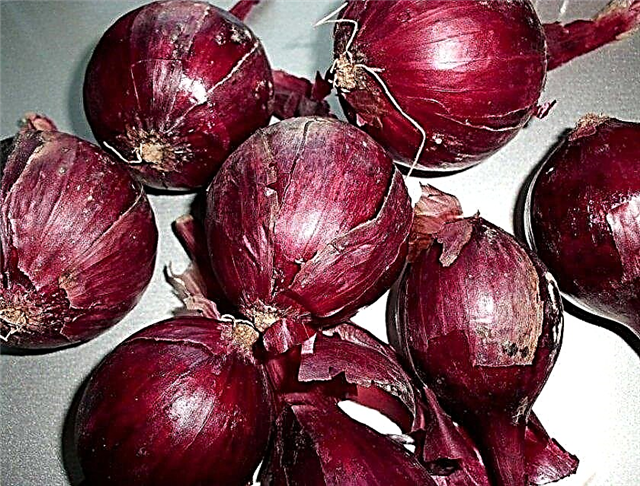
- Yalta - Suitable for cultivation only in the southern regions. The variety is very moody, and it will not be possible to get a full crop without special fertilizers.
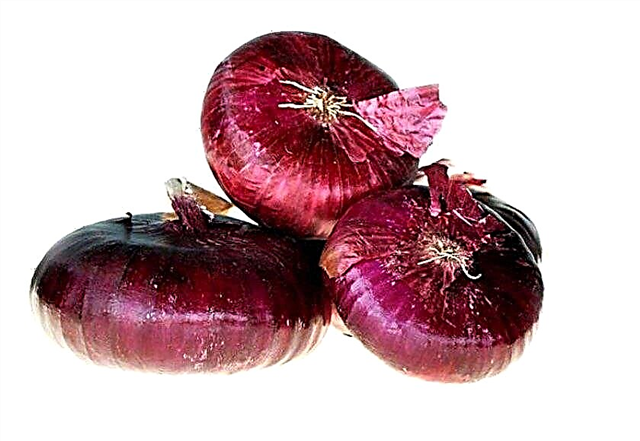
- Aleko - differs from previous varieties by the presence of a blue tint on the cut. It can develop normally in any climatic conditions. Ripens in 10-12 weeks. In the southern regions it is grown by seed through direct sowing, in the northern regions through seedlings or in greenhouses. Seeds form three seeds in the ground, densely fused together.
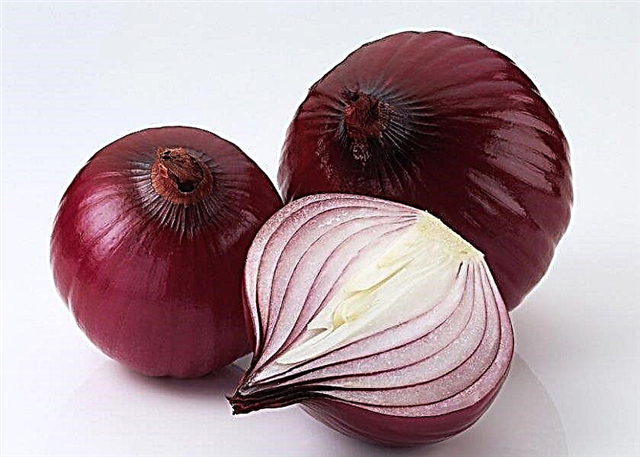
- Black Prince - to taste closer to ordinary onions. It differs from other varieties by comparatively good keeping and transportability. In the southern regions it is grown by seed through direct sowing, in the northern regions - only in greenhouse conditions.
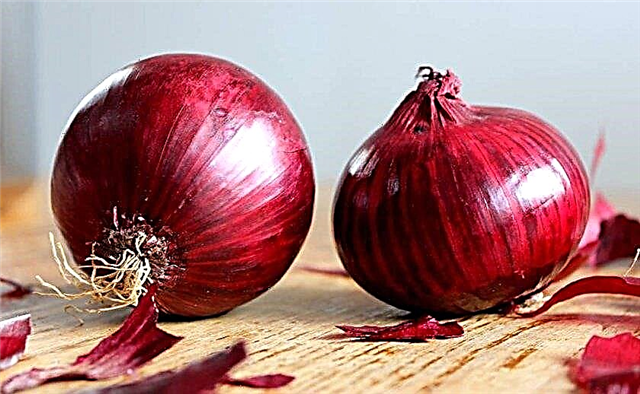
- Yukont - the variety is distinguished by good keeping quality. The fruits are semi-sharp in taste. A good harvest can only be obtained in the southern regions and the middle lane.

Calorie content and vitamin composition
100 g of violet fresh produce contains 42 kcal, which accounts for:
- proteins - 1.4 g;
- fat - 0 g;
- carbohydrates - 9.1 g.
Vitamin Composition:
- vitamin C;
- B vitamins;
- retinol acetate;
- Vitamin E
- folic acid;
- vitamin group R.
Mineral composition:
- chromium;
- zinc;
- magnesium;
- calcium;
- iron;
- bromine;
- iodine;
- potassium and others
Useful properties of purple onions
Due to the high content of antioxidants, this species is a natural antiseptic that effectively eliminates harmful microorganisms in colds, purulent wounds. B vitamins are the main building material for the entire human body:
- muscle fibers;
- nerve cells;
- tissues of internal organs.
 Regular moderate consumption of such products can significantly improve the condition of the skin and vascular walls, thanks to the combination of B vitamins and retinol acetate. Vitamin E helps restore hair structure and accelerates their growth. Increased cysteine production due to sulfur compounds reduces the level of intoxication of the body.
Regular moderate consumption of such products can significantly improve the condition of the skin and vascular walls, thanks to the combination of B vitamins and retinol acetate. Vitamin E helps restore hair structure and accelerates their growth. Increased cysteine production due to sulfur compounds reduces the level of intoxication of the body.Quercetin is not only a diuretic, but also capable of exerting an antihistamine effect, which positively affects the body of allergy sufferers who are in the acute stage. Thanks to chromium, even with such a high content of carbohydrates, the product is approved for use by diabetics.
The element lowers blood sugar. Juice of red specimens effectively increases the acidity of the stomach, normalizing the digestion of food. Also, the vegetable has an anthelmintic effect. The use of certain amounts of the whole course will help to quickly get rid of worms.
Did you know? Most onions in the world are consumed in Libya. There, onions are added to all dishes and each Libyan has 33 kg per year.
Contraindications and harm
Onion juice can be harmful if consumed uncontrollably. The daily rate of consumption of red onion for an adult healthy person is 78 g. Too many antioxidants can irritate the gastrointestinal mucosa. Such symptoms can occur with uncontrolled consumption of products.
- An increase in acidity can lead to:
- discomfort in the stomach;
- heartburn;
- diarrhea
- vomiting.
- Violet varieties are prohibited for use by people suffering from:
- gastritis;
- gastrointestinal diseases, accompanied by increased acidity;
- pancreatitis
- kidney and liver dysfunction;
- skin diseases.
Where to use purple onions
Violet varieties are actively used in almost all areas of human activity.
In folk medicine
There are many popular recipes for treating cough. The most effective is using onion juice. Raw materials are mixed 1: 1 with honey and take 1 tsp. before meals 3 times a day. The course of treatment is 7 days. This is an excellent expectorant, tonic, immunomodulating agent. As a diuretic, juice is used, mixed with water 1: 2. In such a composition, to improve the taste, you can add a spoonful of honey or citrus juice.
Take the composition 3 times a day, 50 ml in between meals. The course of treatment is 10 days. If you have problems with hair loss or they grow very slowly, you can use juice and gruel as a medical mask. The onion is crushed on a blender.
Important! Before applying onion juice externally, be sure to conduct a wrist test. If the skin turns red and itchy, refuse to use the proposed recipe.
To the resulting mass to add the necessary viscosity and increase the nutritional value of the mask add 20 g of burdock oil. Mass is applied to the scalp with massaging movements. Then a bag is put on the head to provide a sauna effect. Soak for 20-30 minutes and rinse with warm water, wash your hair with shampoo and rinse your hair with chamomile broth.
In cooking
In cooking, products are used in:
- first courses;
- salads;
- sauces;
- meat and fish marinades;
- appetizers;
- pies, dumplings, dumplings.

Can I use purple onions during pregnancy and breastfeeding
During pregnancy, raw onions can cause heartburn. You can use it in moderation, adding to salads, if a woman does not suffer from stomach problems. To maintain immunity and enrich the taste of dishes, a small handful of chopped onions is enough. In the processed (steamed, boiled, sautéed) form, this vegetable can be consumed in unlimited quantities.
Pregnant women should not get involved in fried and deep-fried onions, so as not to provoke an increase in blood cholesterol. Nursing mothers should refuse to use fresh produce, as this can ruin the taste of milk, and the child will refuse to eat it. If the vegetable has undergone heat treatment, then its use is only welcome.
Important! Many useful trace elements during heat treatment in the onion completely disintegrate.
It can be added to soups, stews and savory casseroles. You can add green onion feathers to your diet when your baby is 2 months old. The main thing is to introduce the product gradually, to consume it in the morning. At first, just a feather of greens is enough. Over time, you can increase the consumption rate if the baby does not have negative reactions.
Ways to store at home
The main requirement for the storage of purple varieties is to maintain an optimal microclimate in the room:
- humidity - 60%;
- air temperature - +5 ... + 18 ° С.
A small number of root crops can be stored in old tights in limbo. If you do not cut the tops, then you can form onion braids and store them in the kitchen. This storage method can be used to decorate the interior. A large number of root crops must be stored in boxes made of wood or plastic. In the drawers there must be a sufficient number of holes through which air circulation will occur. Fruits are arranged in layers, sprinkled with wood shavings or overgrown with parchment paper. Inspect the products weekly for signs of decay. All infected instances must be cleaned immediately.
In the drawers there must be a sufficient number of holes through which air circulation will occur. Fruits are arranged in layers, sprinkled with wood shavings or overgrown with parchment paper. Inspect the products weekly for signs of decay. All infected instances must be cleaned immediately.
Not all purple varieties are suitable for storage. When buying seeds, you need to carefully read the manufacturer's annotations. Violet varieties are distinguished by a rich delicate taste with a characteristic piquancy and a rich vitamin composition. Their regular consumption in moderation will help to effectively increase immunity and protect against seasonal vitamin deficiency.






